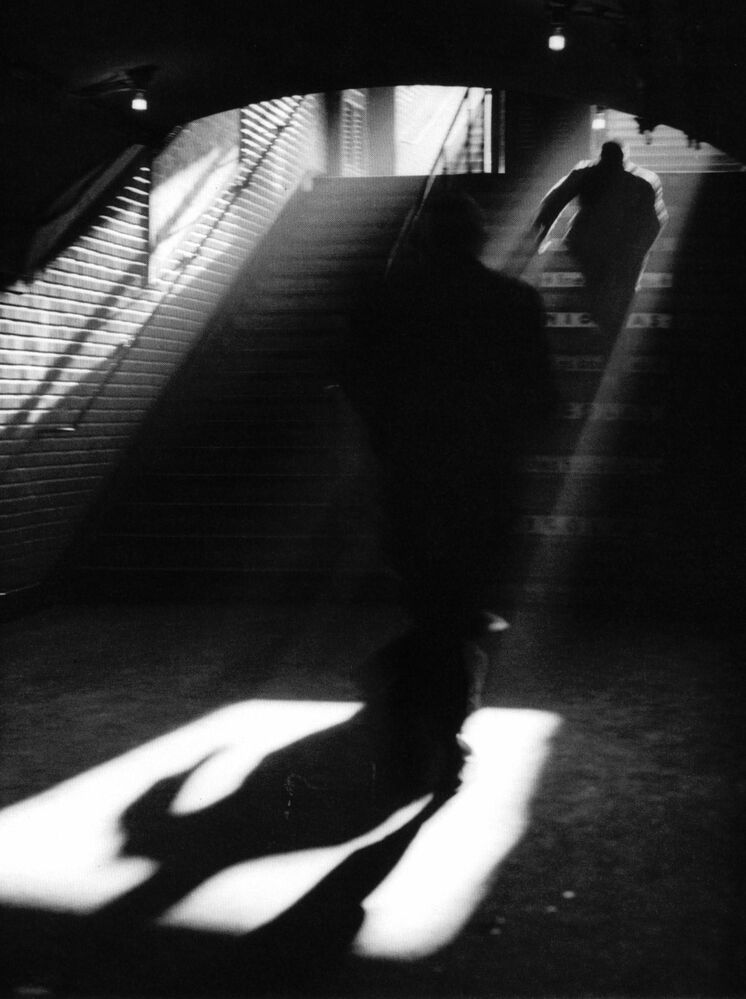
Sortie de metro, Paris, 1955
Sabine Weiss
1924 - 2021
43 x 28.5 cm.
© Sabine Weiss / BONO
Om fotografen
Sabine Weiss (b. 1924) is a Swiss-French photographer and one of the most prominent representatives of the French humanist photography movement, along with Robert Doisneau, Willy Ronis, Édouard Boubat and Izis. She was born in Saint-Gingolph, Switzerland, and became a naturalised French citizen in 1995.
Sabine Weiss began to photograph in 1932 with a bakelite camera bought with her pocket money and made contact prints on printing-out paper on her windowsill. Her father supported her in her choice, and she later learned photographic technique, from 1942 to 1946, from Frédéric Boissonnas, a studio photographer in Geneva. After this apprenticeship, she received the Swiss qualification in photography in 1945. Weiss moved to Paris in 1946 and became Willy Maywald's assistant: “with him I understood the importance of natural light. Natural light as a source of emotion“.
She published her first photo report at the age of 21 in 1945. She thus attended the opening of the house of Dior and the presentation of the first collection at 37 Avenue Montaigne. In 1949, she traveled to Italy and met the American painter Hugh Weiss, whom she married on September 23, 1950. Sabine Weiss opened her own studio.
She works in various sectors: passionate about music, she portrayed the big names in music but also those of literature and art, cinema and fashion
Weiss’s street photography was produced independently of her magazine work, for love, and embraces the philosophy of humanist photography. At 28 she was recognized by Steichen’s inclusion of her in his "Post-War European Photography" at Museum of Modern Art. In 1954, the Art Institute of Chicago devoted a solo exhibition to her which toured the USA. Then Steichen included three of her pictures in the MoMA exhibition The Family of Man which travelled the world and was seen by 9 million visitors. The pictures typify those she took for herself; Intérieur d’église au Portugal of 1954 shows a child in white kneeling on the light-dappled tiled floor, face upturned in question toward her barefoot mother, who like the surrounding phalanx of figures, is dressed in black; the exhuberant Un bal champêtre avec une accordéoniste sur la table also 1954; and Un enfant tenant un épi qui fait des étincelles in which a child gleefully thrusts a sparkler almost into her lens. She says; "I photograph to preserve the ephemeral, fix chance, to keep in an image what will disappear: gestures, attitudes, objects which are testimonies of our passing."
In 1957, she made a series of photographs of the painter Kees van Dongen whom she met through her husband, and on impulse they bought a small shed there overlooking the ruins of the castle at Grimaud. They enlarged the house in 1969 and stayed regularly until the death of her husband in 2007.
In 1983, she obtained a scholarship from the French Ministry of Cultural Affairs and carried out a Study on the Copts of Egypt. In her late fifties, Weiss participated in a longitudinal photographic study, a kind of ‘Mass Observation’, of a small new town near Nice called Carros-Ie-Neuf over several years with Jean Dieuzaide and Guy le Querrec, working with sociologist Pierre Bourdieu and joined briefly by Leonard Freed. The project was shown at the 1984 Rencontres d'Arles Festival as 'Urbain, Trop Urbain?' In 1992, the Ministry issued her another scholarship to document Réunion.
Sabine Weiss